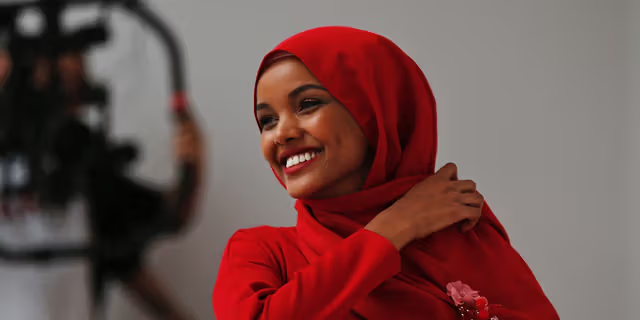The American Red Cross provided the majority of the material, which implies that the broad information is applicable worldwide, but the statistics are limited to the United States (US). Find a donation center near you by clicking here.
The following are the eight different types of blood: A+, A-, B+, B-, O+, O-, AB+, AB-
BLOOD GROUP TYPES BELOW;
A+
Has A antigen on red blood cells and B antibody in plasma; Rh factor positive
It affects approximately 34% of the US population, or approximately one out of every three persons. African-Americans make up 24% of the population, Asians make up 27%, Caucasians make up 33%, and Latinos make up 29%.
A+, A-, O+, or O- blood, which is found in approximately 86% of the US population, can be given to the patient.
A+ or AB+ patients, which account for around 37.5% of the US population, can donate.
A–
Has A antigen on red cells and B antibody in plasma; Rh factor is negative.
It affects approximately 6.3% of the US population, or approximately 1 in every 16 persons. African-Americans make up 2% of the population, Asians make up 0.5%, Caucasians make up 7%, and Latinos make up 2%.
A- or O- blood, which is found in around 13% of the US population, can be given to the patient.
A-, A+, AB+, or AB-
Patients can donate, accounting for around 44.5% of the US population.
B+
Has B antigen on red blood cells and A antibody in plasma; Positive Rh factor
It affects approximately 8.5% of the US population, or approximately 1 in every 12 persons.
African-Americans make up 18% of the population, Asians make up 25%, Caucasians make up 9%, and Latinos make up 9%.
The patient may be given B+, B-, O+, or O- blood, It affects around 8% of the population in the United States
A person can donate to a patient who is B-, B+, AB+, or AB-, which corresponds to about 14% of the US population.
B-
Has B antigen on the red cells and A antibody in the plasma; Rh factor negative
It is found in about 1.5% of the US population or about 1 out of every 67 people; African-American: 1%; Asian: 0.4%; Caucasian: 2%; Latino-American: 1%
Patient can receive B- or O- blood which is found in approximately 8% of the US population
Person can donate to a patient who is B-, B+, AB+, or AB- which equates to approximately 14% of the US population
O+
Possesses neither A nor B antigens on the red cells but both A and B antibodies in the plasma. Positive Rh factor.
It is found in around 39% of the US population, or almost one out of every three persons, making it the most common type of blood. African-Americans make up 47% of the population, Asians 39%, Caucasians 37%, and Latinos 53%.
Patients can get either O+ or O- blood, which is prevalent in 45.5% of the US population.
A person can donate to a patient who is O+, A+, B+, or AB+ for roughly.
Person can donate to a patient who is O+, A+, B+, or AB+ which equates to approximately 85% of the US population.
O-
There are no A or B antigens on the red cells, yet there are A and B antibodies in the plasma. The Rh factor is negative.
It affects approximately 6.6% of the US population, or approximately 1 in every 15 persons. African-Americans make up 4% of the population, Asians make up 1%, Caucasians make up 8%, and Latinos make up 4%.
Only O- blood can be given to the patient.
A person is called a universal donor and can donate blood to any patient of any type, including A+, A-, B+, B-, O+, O-, AB+, or AB-.
Because of its universality, it is the most sought for blood type and the first to run out during a shortage.
AB+
Has A and B antigens on red cells but no A or B antibodies in the blood; Rh factor positive.
It affects roughly 3.5% of the US population, or about 1 in every 29 persons. African-Americans make up 4% of the population, Asians make up 7%, Caucasians make up 3%, and Latinos make up 2%.
Patient is referred to as a universal recipient since they can receive any type of blood from any patient, including A+, A-, B+, B-, O+, O-, AB+, or AB- Person can only donate to an AB+ patient but can donate plasma to any patient, making them a universal plasma donor.
A-
There are A and B antigens on red cells but no A or B antibodies in the plasma; Rh factor is negative.
It is present in only 0.6% of the US population, or approximately 1 in every 167 persons, making it the rarest kind of blood. African-Americans make up 0.3% of the population, Asians make up 0.1%, Caucasians make up 1%, and Latinos make up 0.2%.
Patients can be given any of the negative blood types, such as AB-, A-, B-, or O-, which are found in about 15% of the US population.
A person can donate plasma to any patient who is AB- or AB+, which translates to about 4% of the US population, and they can donate plasma to any patient, making them a universal plasma donor.
READ ALSO: Chilling Story Of Bandit Confessing to Drinking Blood of Dead Victims
Other Statistics and Facts
Patients are given red blood cells during and after surgery, in trauma conditions, or when they are anemic: a hemoglobin (hgb) level less than 7.0
Platelets are given to assist blood clot, which is frequently required during chemotherapy for cancer, open heart surgery, blood disease treatment, and organ transplants.
Plasma is frequently administered to trauma patients, burn sufferers, and individuals with coagulation issues.
White blood cells aid in the fight against viruses, bacteria, and fungus.
Every two seconds, someone in the United States need a blood transfusion.
The average person can only donate one pint of blood at a time.
Blood has a shelf life of 21-35 days following donation, whereas platelets have a shelf life of 5 days.
Only around 38% of the US population is able to donate blood, but only about about 3% actually do.






















